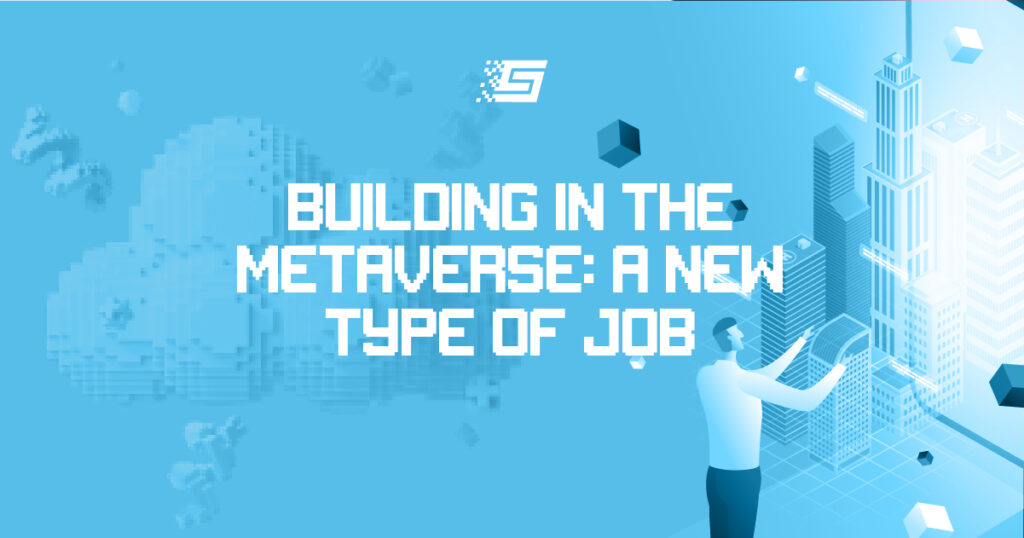What Can NFTs Really Do For The Metaverse – Part 2
What Can NFTs Really Do?
Non Fungible Tokens or NFTs are “one-of-a-kind” assets in the digital world that can be bought and sold like any other piece of property, but which have no tangible form of their own. This includes things such as digital art or exclusive videos and many other virtual items. Non-fungible tokens are digital ownerships that come with unique properties so they can’t be interchanged with something else and are based on underlying smart contracts.
By the end of 2021, when the metaverse started trending, many brands leveraged the opportunity to utilize NFTs for the sale of digital goods and to build their brand equity in the virtual world.
Online gaming platforms, entertainment companies, sports events, art dealers, and luxury brands all wanted to play a part in the unique experience, offering products that transcend geographical barriers.
The covid 19 pandemic proved that interacting with others during lockdowns was not easy, however, it opened a window of opportunity for people to start engaging remotely and in virtual worlds. All of which brought more attention to the metaverse and its potential use cases.
In the digital world, an infinite number of experiences await. The aim of the metaverse is to merge the physical with the digital world. The idea is to allow users to create their own avatars, enter the virtual world, engage and interact with others users in virtual reality, and buy and sell digital goods, like a ticket or vouchers. For example, you could have dinner with a celebrity, or meet a friend to attend a virtual concert or comedy show. There are limitless possibilities in the metaverse and this article aims to explore the role of NFTs in the metaverse and its applications.
Brand Names Entering The Metaverse
Luxury and fashion brands turned to NFTs and virtual reality for marketing and advertising.
In early 2022, Decentraland hosted their Metaverse Fashion Week with brands like Tommy Hilfiger, Selfridges, DKNY, and Paco Rabanne on show. The company created virtual experiences for attendees to watch live events, join panels, purchase fashion items, and also have the chance to win unique tokens.
Other brand names that entered the metaverse recently include Gucci, Burberry, Dolce & Gabbana, and Balenciaga. Dolce & Gabbana released a nine-look collection, one of which sold for $5.7 million.
Gucci and Roblox formed a partnership to create a lookalike of the brand’s Florence art installation. Entrants’ avatars could explore the gallery and try on virtual replicas of Gucci’s clothing and accessories.
Nike also partnered up with Roblox to create Nikeland. It is a metaverse concept store that people can browse through and buy Nike clothes and accessories for their avatars. They can also play mini-games like tag or dodgeball.
Nike is just one of a growing number of global brands establishing their presence in the metaverse. Although the concept is still in its infancy, it may reshape the shopping experience in the future.
In addition, Glenfiddich, the Scotch distiller, recently sold a set of NFTs attached to rare 46-year-old bottles of whiskey. The NFTs sold for $18,000 each enabling the buyer to redeem their purchased bottle, and once the ownership was transferred the token would disappear forever.
The Implementation Of NFTs In The Metaverse
NFTs have the potential to fuel the digital economy, some of which include:
- Proof of identity and authenticity
- Interoperability
- Building the infrastructure for UGC (user-generated content)
- DeFi (decentralized finance)
- GameFi (game finance)
Let’s break some of these down in a little more detail.
Proof Of Authenticity And Identity
A major part of building a metaverse is ensuring that the ecosystem is based on trust and secure transactions. NFTs give one proposition for how to solve this challenge of proof of authenticity, ownership, and identity. Because it is based on blockchain, it can hold an immutable, permanent record of all transactions.
Unless one has specialized skills, materials, and technology to recreate objects in the material space, counterfeiting anything is a difficult task. With a digital object, not much special skill is required aside from following instructions from a tutorial.
While it’s unlikely that anyone in the physical space will ever pretend to be you in the flesh, counterfeiting people’s documents and stealing your digital identity is much easier and very commonplace.
Digital avatars can work as reliable proof of anybody’s identity.
With NFTs, if someone were to copy your avatar’s digital clothing or appearance, they would not be able to actually impersonate you. A tokenized avatar will be unique and impossible to counterfeit.
Virtual World Interoperability
The transfer of objects between different virtual worlds is the first step to an interoperable metaverse. In fact, it is essential if we want to build an actual metaverse rather than a multiverse of separate virtual worlds.
Every virtual world in the past was built on its own programming framework, closed within a given developer’s intellectual property, meaning the transfer of any object between different virtual environments was either impossible or extremely complicated.
NFTs are stored on their own blockchain infrastructure, and once implemented at a scale of deep integration, users will have the ability to bring tokenized items like avatar skins, weapons, and almost anything else you can imagine into every virtual world they visit.
But the application of NFTs in the metaverse doesn’t stop there. Tokenized digital assets could even transfer between the internet and physical space in the future.
When the metaverse goes mainstream, people who choose to build a virtual life there will seek out more and more of what shapes our real lives today. We would likely want a place to call home and collectibles that hold special meaning or monetary value, among other things.
Virtual worlds also open new possibilities for building a personal brand or social image.
Market Infrastructure For Digital Artists And UGC (User-Generated Content)
NFTs started out by creating the backbone of proof of ownership for the digital art market. Of course, it is not the only application of non-fungible tokens, but it remains one of its top value offerings.
In 2021, Christie’s hosted an auction of an NFT, which resulted in a record sale of Beeple’s “Everydays: the First 5000 Days”. The piece raked in a cool $69.3 million (42,329 ETH). A few months later, major auction house Sotheby’s launched the first full virtual art gallery on the platform Decentraland.
These are two events showing that crypto tech has already gone mainstream, at least in the world of art trading.
The metaverse is the ultimate destination for displaying digital art, providing a 3D environment that allows users to interact with what used to be a JPG, GIF, or video.
In the past, NFTs used to simply transfer ownership and licensing rights for digital artwork. The tech now provides new opportunities for much more than just for digital artists making standalone pieces of art.
NFTs give creators a way to make customized items for in-game play and virtual worlds in general. NFT creators can also collect royalties from resales or even from renting out their content.
Web2-style virtual platforms retain most intellectual property rights for assets such as avatar skins, objects, buildings, and a myriad of other assets created by platform users.
Non-fungible tokens located on independent blockchain networks provide a framework for UGC property rights to be recorded and utilized outside of proprietary platforms.
Independent blockchains help to empower content creators to reclaim their rights.


